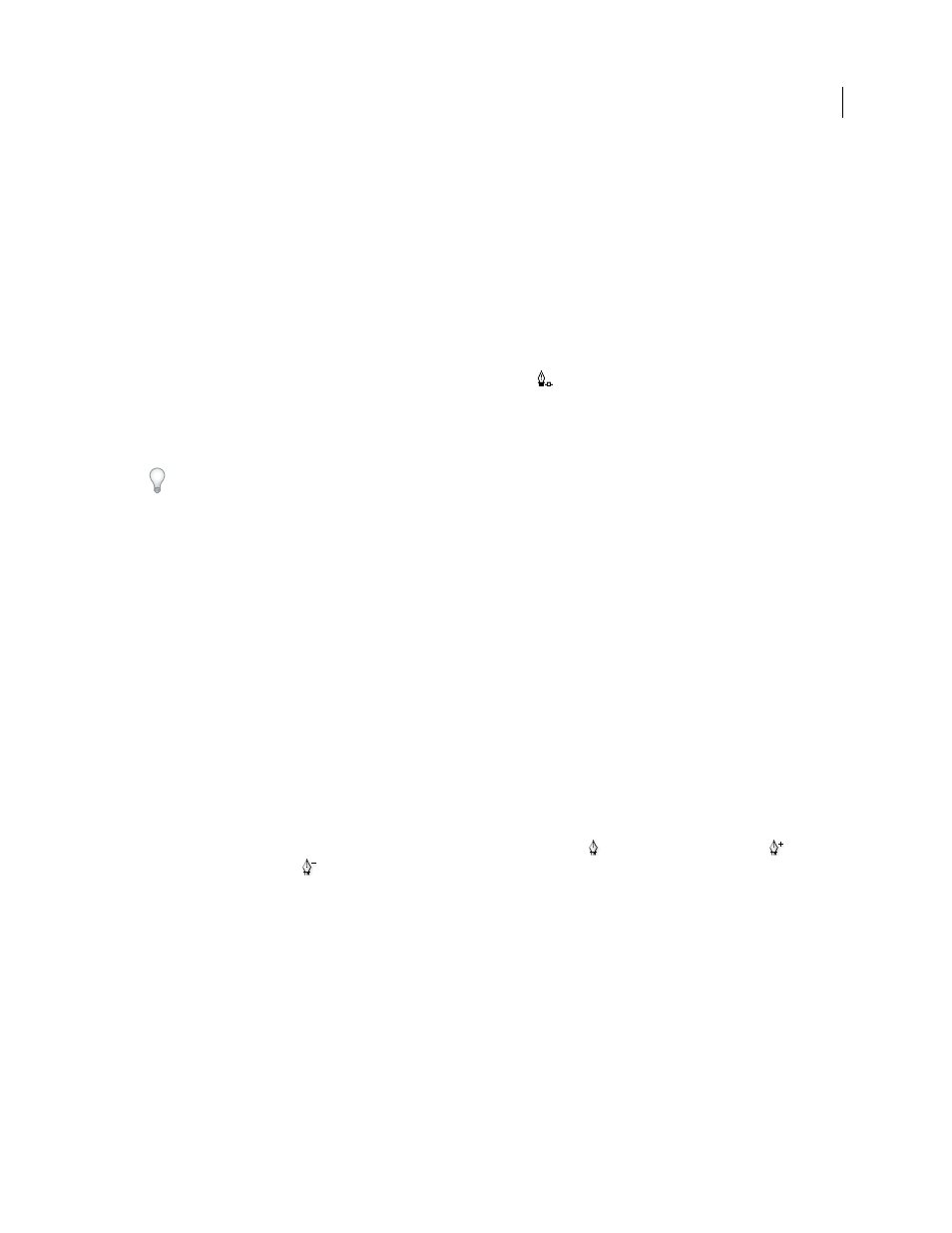Connect two open paths, Add or delete anchor points – Adobe InDesign CS5 User Manual
Page 360

354
USING INDESIGN
Drawing
Last updated 11/16/2011
Note: In Illustrator, if you extend a path that ends in a smooth point, the new segment will be straight.
•
To create a smooth point, position the Pen tool where you want to end the new curved segment, and drag.
Connect two open paths
1 Using the Pen tool, position the pointer over the endpoint of the open path that you want to connect to another
path. The pointer changes when it’s precisely positioned over the endpoint.
2 Click the endpoint.
3 Do one of the following:
•
To connect the path to another open path, click an endpoint on the other path. When you precisely position the
Pen tool over the other path’s endpoint, a small merge symbol
appears next to the pointer.
•
To connect a new path to an existing path, draw the new path near the existing path, and then move the Pen tool
to the existing path’s (unselected) endpoint. Click that endpoint when you see the small merge symbol that appears
next to the pointer.
In InDesign, you can also use the Pathfinder panel to join paths. To close the path of an open path, use the Selection
tool to select the path and click Close Path in the Pathfinder panel. To close the end points between two paths, select
the paths and click Join Path. You may want to click Join Path a second time to join the second endpoint.
Move or nudge anchor points or segments using the keyboard
1 Select the anchor point or path segment.
Note: In Photoshop, you can move only anchor points in this manner.
2 Click or hold down any of the arrow keys on the keyboard to move 1 pixel at a time in the direction of the arrow.
Hold down the Shift key in addition to the arrow key to move 10 pixels at a time.
Note: In Illustrator and InDesign, you can change the distance of a nudge by changing the Keyboard Increment
preference. When you change the default increment, holding down Shift nudges 10 times the specified distance.
Add or delete anchor points
Adding anchor points can give you more control over a path or it can extend an open path. However, it’s a good idea
not to add more points than necessary. A path with fewer points is easier to edit, display, and print. You can reduce
the complexity of a path by deleting unnecessary points.
The toolbox contains three tools for adding or deleting points: the Pen tool
, the Add Anchor Point tool
, and the
Delete Anchor Point tool
.
By default, the Pen tool changes to the Add Anchor Point tool as you position it over a selected path, or to the Delete
Anchor Point tool as you position it over an anchor point. (In Photoshop, you must select Auto Add/Delete in the
options bar to enable the Pen tool to automatically change to the Add Anchor Point or Delete Anchor Point tool.)
You can select and edit multiple paths simultaneously in Photoshop and InDesign; however, you can add or delete
points to only one path at a time in Illustrator. In Photoshop and InDesign, you can reshape a path while adding anchor
points by clicking and dragging as you add.
Note: Don’t use the Delete, Backspace, and Clear keys or the Edit > Cut or Edit > Clear commands to delete anchor
points: these keys and commands delete the point and the line segments that connect to that point.
Add or delete anchor points
1 Select the path you want to modify.
